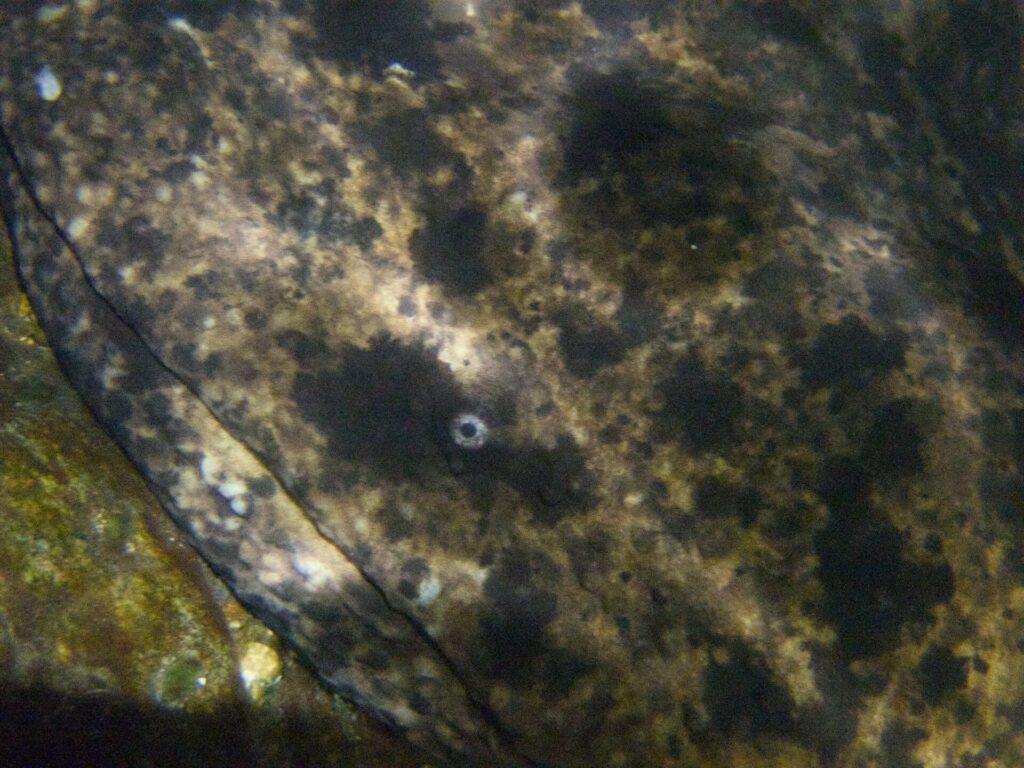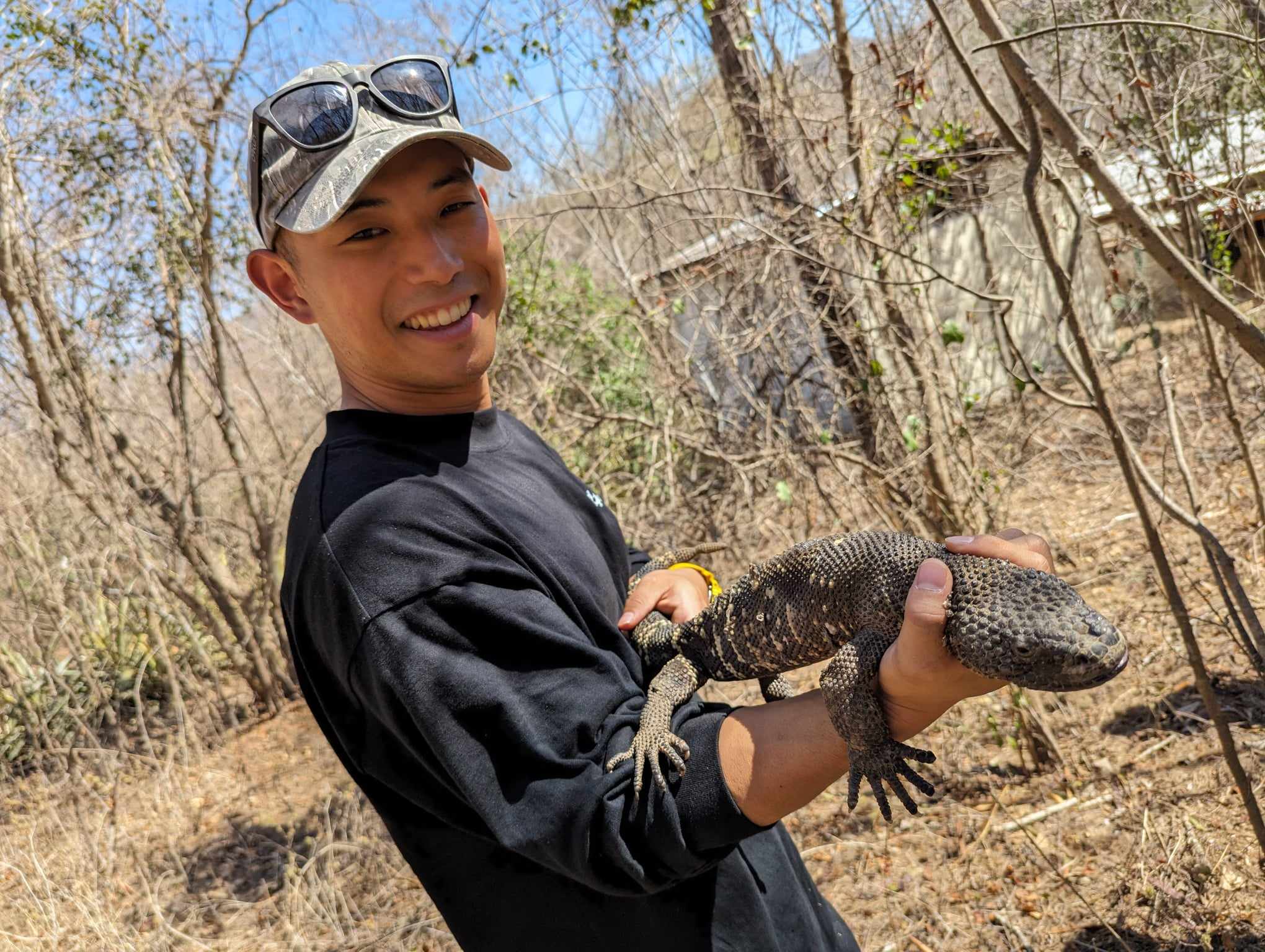Japanese Giant Salamander (Andrias japonicus)
While walking along a mountain stream at night, I encountered what looked like a living boulder—it was a Japanese giant salamander, one of the largest amphibians in the world. Reaching lengths of up to 1.5 meters, this massive creature lies silently beneath the water’s surface, waiting to ambush its prey like a ninja of the natural world.
This species, endemic to Japan, is now facing the threat of extinction due to habitat degradation and genetic pollution from introduced species. In this article, I’ll share key tips on how to find these elusive animals, along with insights from my own field experience.
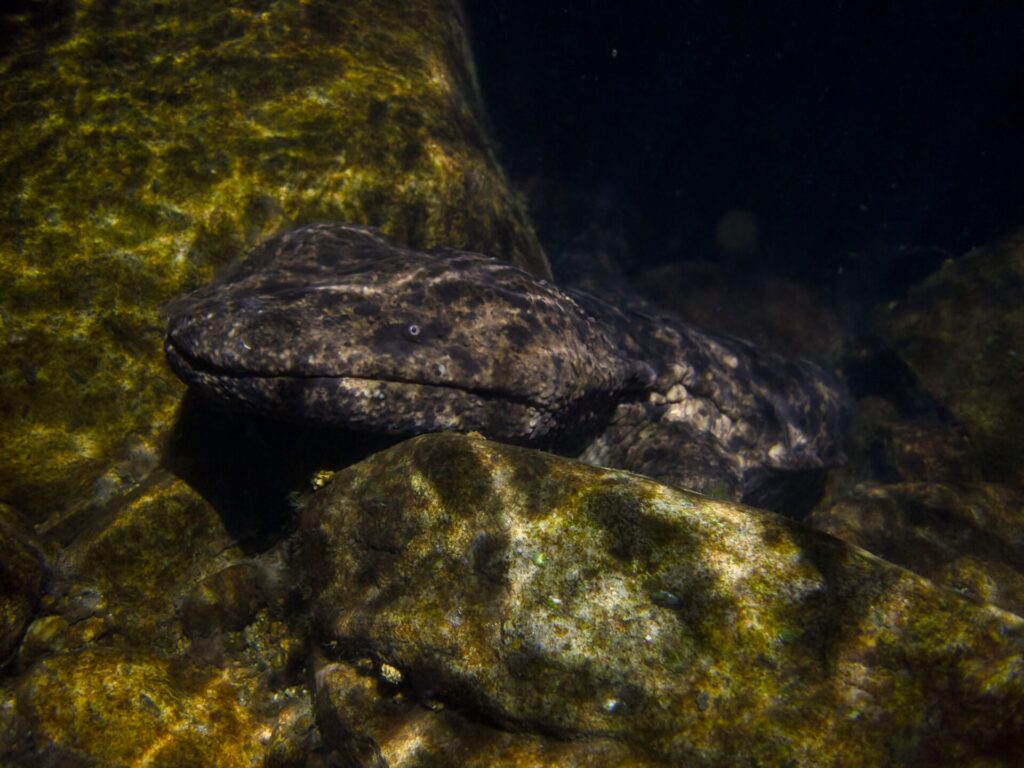
Habitat
The Japanese giant salamander inhabits limited areas in southwestern Japan, including regions west of Gifu Prefecture on Honshu, parts of Shikoku, and northern Kyushu. They are typically found in cool, clear streams at elevations of 400 to 600 meters. As a unique species native to Japan, they are designated as a Special Natural Monument.
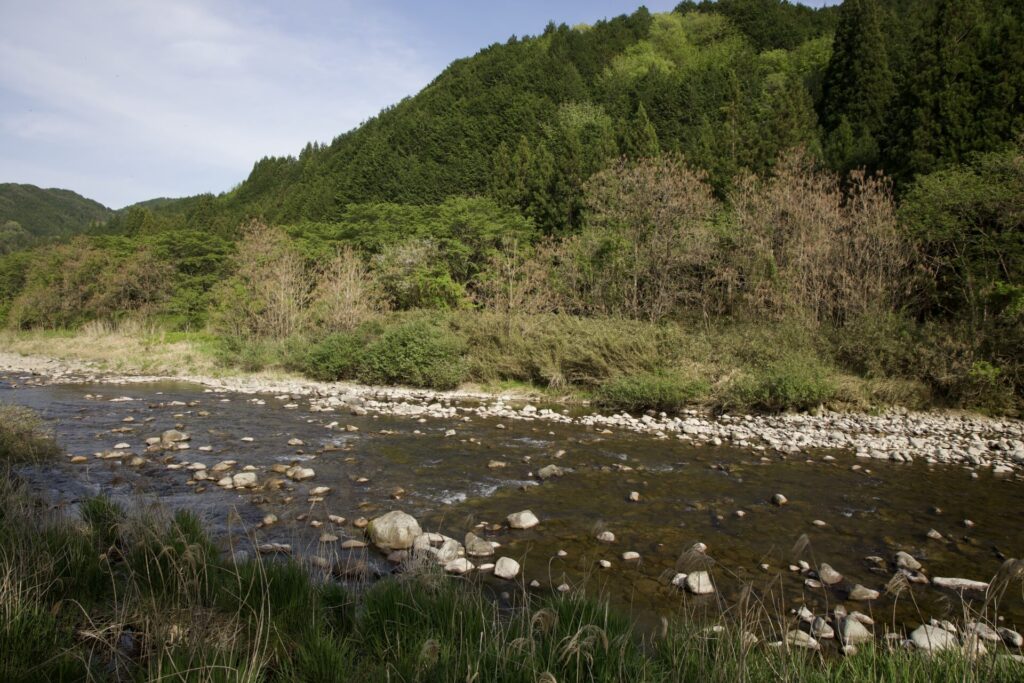
How to Search
Surprisingly, these salamanders are often found in relatively shallow water. This is because they rely on lungs for breathing and must surface periodically for air. Additionally, their method of hunting—suction-feeding prey such as fish or crustaceans—is easier in shallow areas.
Look for habitats with submerged rocks and crevices large enough for them to hide in completely. Their activity peaks at night, so bringing a flashlight and watching the surface carefully is key.
The Encounter
During our search, we explored both day and night, but it was after dark that we finally found one. In a stream about 60 cm deep, a large salamander emerged from a crevice to breathe. It was around 80 cm long and showed signs of healthy growth, with fresh skin shedding visible on its limbs.
Seeing this giant creature slowly move under the beam of our light was nothing short of breathtaking—an unforgettable moment in the wild.
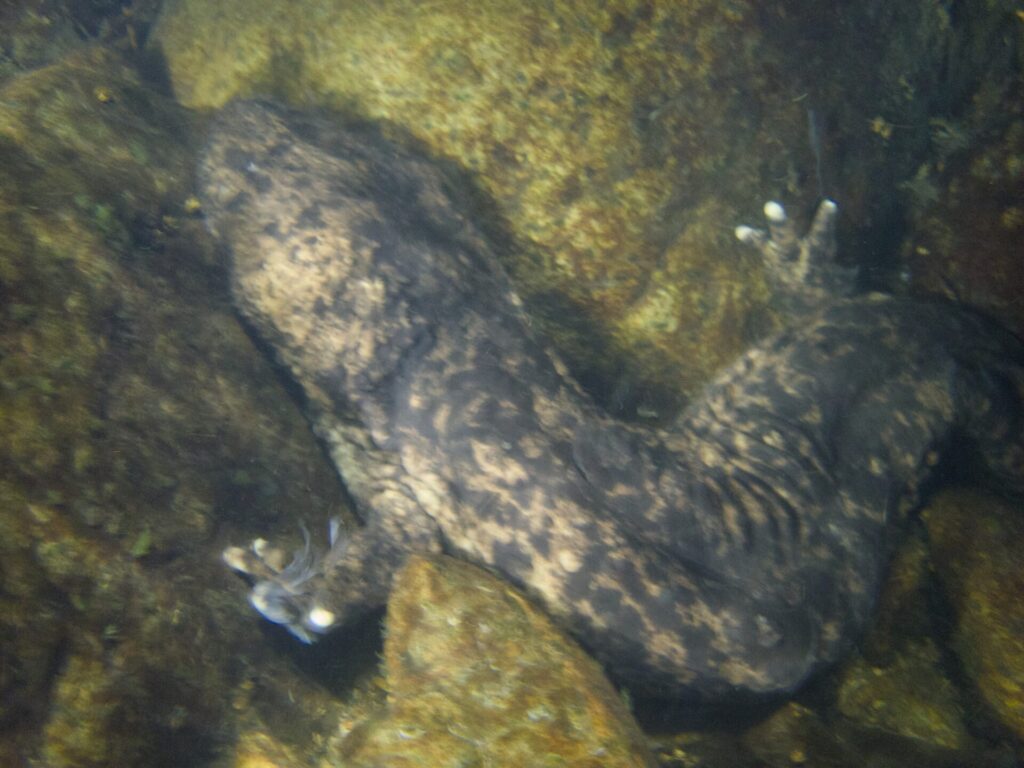
Conclusion
With its comically small eyes and wide, endearing face, the Japanese giant salamander is a creature that grows more fascinating the longer you observe it. Encountering one in its natural habitat offers a rare opportunity to reconnect with the hidden life of Japan’s mountain streams.
This gentle giant is silently disappearing. If you get the chance, don’t miss the opportunity to see one with your own eyes—it’s a memory that will stay with you forever.
